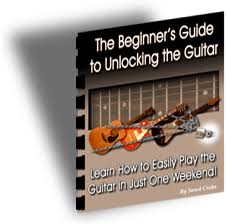The Mystery That Comes When You Learn How To Play The Piano
When you talk about a piano, many people could only dream of what it would feel like to play piano. Some of the acquired skills take years to comprehend, and many people often times feel that they simply do not have the time or the patience to put into learning this awesome skill.
There are a lot of websites online that have continued to pop up promising that they can teach the right way to play the piano in no time flat. However, there have been no reviews on these sites posted specifying if their lessons truly were successful or not.
Before you can begin to play piano, there is so much that you must first be able to comprehend. You have to analyze the piano and be able to break down each particular part. You will definitely need to understand that each key serves a particular purpose and you will have to train yourself on what the purpose of certain keys are.
The music alphabet is also something that is imperative that you have a firm understanding of, before you can begin playing. The music alphabet is in a way like our alphabet but lacks a lot of letters. The music alphabet goes from A to G. Each letter actually represents a certain sound. You will need to know what sounds each letter makes.
When you're faced with the fact of having to play the piano, it may seem a little daunting at first. Just remember people have conquered learning how to play the piano for years, and you will be able to as well.
Many people want to learn how to play the piano simply because of the sounds that they have heard come from it. No one would probably have a spark of interest in learning how to play if you never heard what it sounded like. Hearing the piano can be intimidating to those who are looking to learn to play themselves.
You need to be able to put yourself in the frame of mind that learning to play piano can easily be accomplished. You have to believe that you have what it takes to learn the difficult task and just believe in yourself.
Playing the piano is almost like a job in itself, it takes time to develop your skill. You must be open to people nagging on you about how you sound. Take heed of others peoples words and work to prove them wrong. When you do this, you have become a real sincere musician. - 18758
There are a lot of websites online that have continued to pop up promising that they can teach the right way to play the piano in no time flat. However, there have been no reviews on these sites posted specifying if their lessons truly were successful or not.
Before you can begin to play piano, there is so much that you must first be able to comprehend. You have to analyze the piano and be able to break down each particular part. You will definitely need to understand that each key serves a particular purpose and you will have to train yourself on what the purpose of certain keys are.
The music alphabet is also something that is imperative that you have a firm understanding of, before you can begin playing. The music alphabet is in a way like our alphabet but lacks a lot of letters. The music alphabet goes from A to G. Each letter actually represents a certain sound. You will need to know what sounds each letter makes.
When you're faced with the fact of having to play the piano, it may seem a little daunting at first. Just remember people have conquered learning how to play the piano for years, and you will be able to as well.
Many people want to learn how to play the piano simply because of the sounds that they have heard come from it. No one would probably have a spark of interest in learning how to play if you never heard what it sounded like. Hearing the piano can be intimidating to those who are looking to learn to play themselves.
You need to be able to put yourself in the frame of mind that learning to play piano can easily be accomplished. You have to believe that you have what it takes to learn the difficult task and just believe in yourself.
Playing the piano is almost like a job in itself, it takes time to develop your skill. You must be open to people nagging on you about how you sound. Take heed of others peoples words and work to prove them wrong. When you do this, you have become a real sincere musician. - 18758
About the Author:
Evrose vartable is a musician, composer and music teacher. Pay her blog a visit at How To Play Piano Songs and obtain your free online piano lesson informations and learn to play piano helpful tips.




